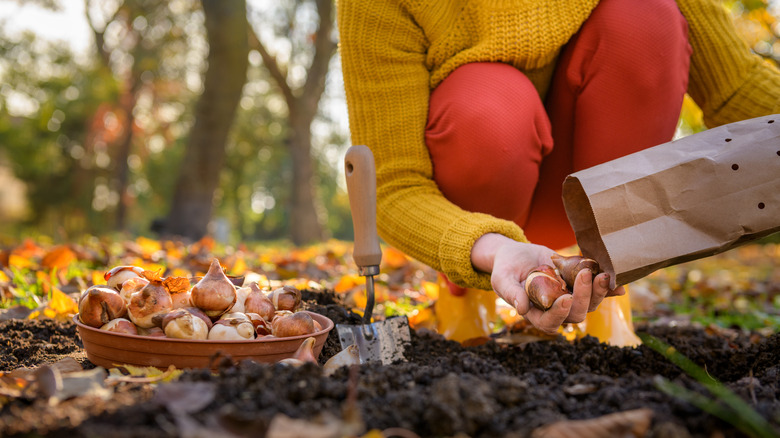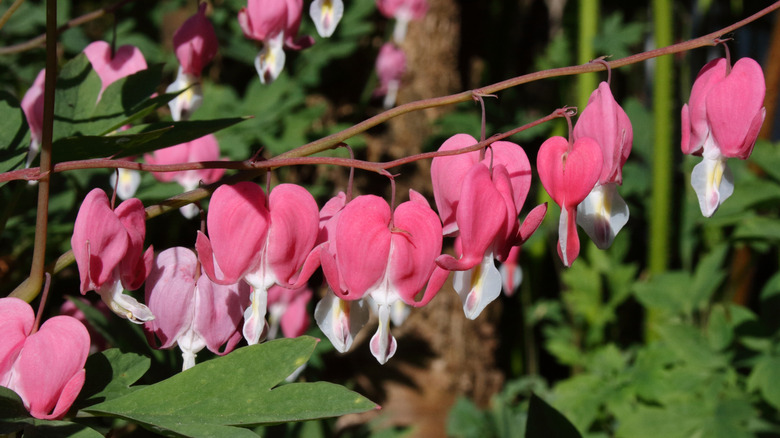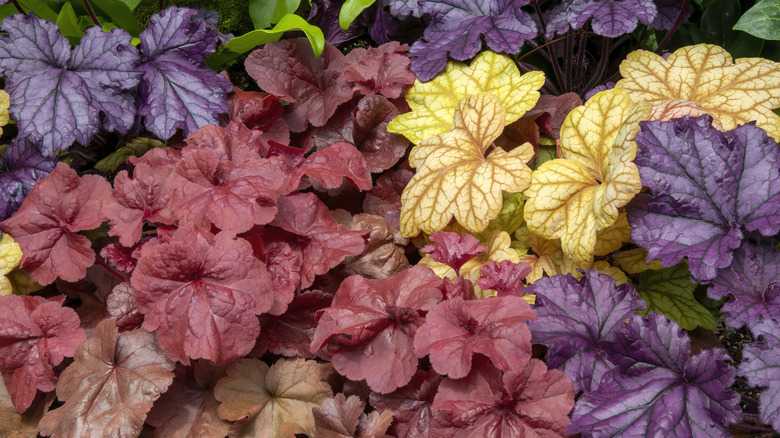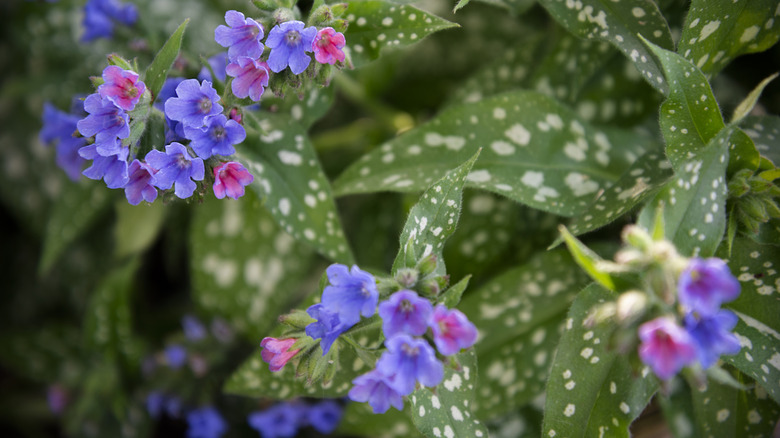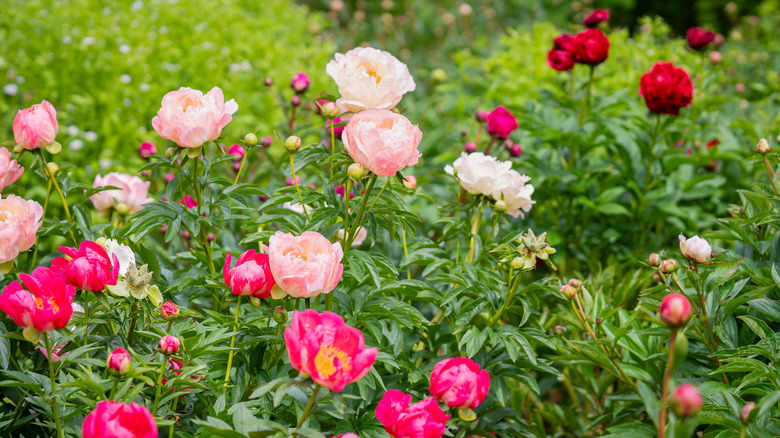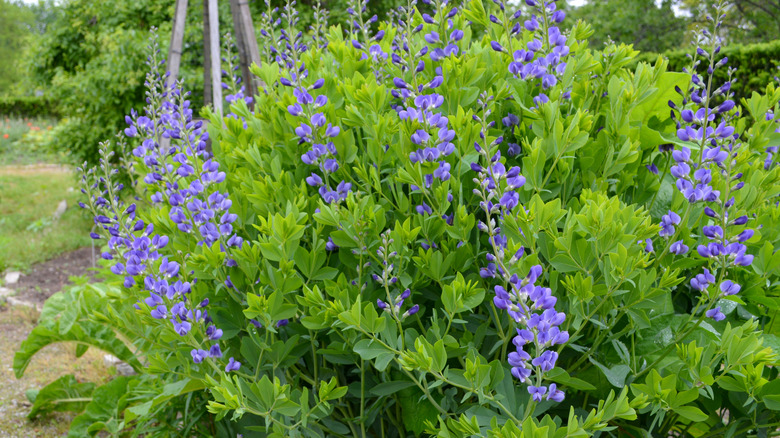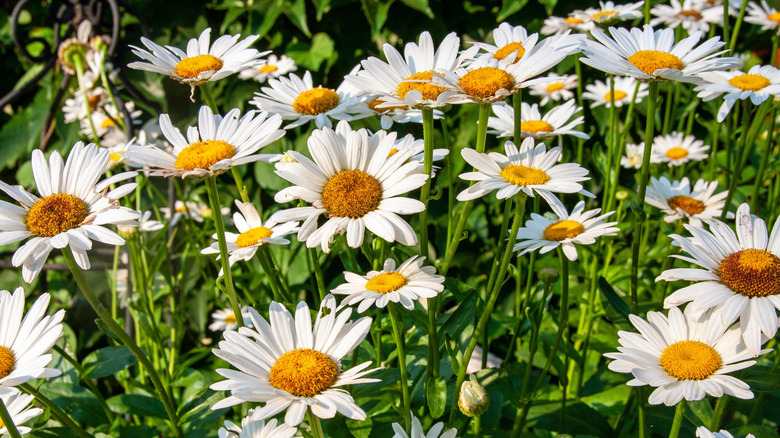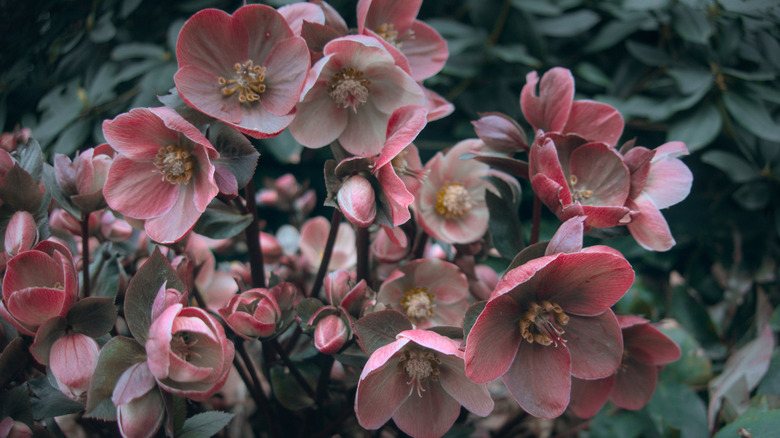7 Perennials To Plant In The Fall For A Vibrant Spring Garden
There's a certain appeal to the idea of fall gardening — a chance to savor the cooler weather and crisp air while you work, plus the promise of something to look forward to after the long winter. It might be even more satisfying if you're planting perennials that you won't have to replant year after year! In fact, fall is the ideal time to transplant or divide many perennials, as you can avoid the stress that high temperatures and lower rainfall might place on plants. From coral bells and hellebores to peonies and Shasta daisies, there is a wide variety of spring perennials that do particularly well when you plant them in fall.
Some careful planning is necessary when laying the foundation for a beautiful spring perennial garden. Perhaps most important is timing; in particular, you need to know when you might expect the first frost of winter in your area. If you want your perennials to survive the winter, it's best to give them plenty of time — ideally a month — to establish their roots, and you might want to add an insulating layer of mulch to protect them from extreme temperatures.
Bleeding hearts
Prolific spring bloomers, bleeding hearts (Dicentra spp.) are excellent early fall "set it and forget it" perennials. Plant tubers in loosened soil about an inch below the surface, spaced 24 inches or so apart in part or full shade in USDA Hardiness Zones 3 through 8. When the foliage and flowers emerge in spring, these flowers that look like hearts will benefit from a layer of compost and mulch to ensure consistent moisture retention. Otherwise, they are very low-maintenance selections. These flowers will also self-seed to form colonies.
Coral bells
Coral bells (Heuchera spp.), also called alumroot, are proof that the color in your spring garden doesn't have to just come from flowers. Although many do produce lovely bell-shaped blooms in the summer, the colorful foliage of many coral bell varieties — ranging from deep purple to bronze to amber — can provide a splash of unique spring interest. Suited to full sun or part shade in zones 3 through 9, you can propagate heuchera by division or from seed. Leave a cushion of six weeks between planting in fall and the first freeze so they can get established.
Lungwort
Native to Europe but not considered invasive thanks to a slow rhizomatous spread, lungwort (Pulmonaria officinalis) boasts unique spring-blooming flowers that change color over time. When the buds first open, the flowers are pink, but due to pH changes as they age, they turn violet and then blue. Additionally, the leaves feature intriguing pale spots. Division of existing plants is the best way to propagate lungwort, and this is best done in fall. Grow lungwort in zones 3 through 8 in partial or full — even heavy — shade. Just make sure the soil isn't too wet or too dry.
Peonies
Is there anything prettier than a springtime explosion of big, fluffy peony (Paeonia spp.) blooms? Ideal for zones 3 through 8 in full or part sun, peonies come in a wide variety of forms and cultivars, including the commonly seen herbaceous garden peony, or Chinese peony (P. lactiflora), and the woody tree peony (P. suffruticosa). Peonies generally prefer rich, well-drained soils and may be out-competed by tree roots if planted too close to trees, so locate them carefully. Whether adding a purchased plant to your garden or dividing an existing plant, fall is the best time to plant peonies.
Blue false indigo
Blue false indigo (Baptisia spp.) does more for your garden than add a pop of blue or purple — these legumes can improve nitrogen in the soil. Their common name refers to the plants' ability to create a blue dye similar to the indigo plant (Indigofera tinctoria). Hardy in zones 3 through 9, blue false indigo prefers acidic, moist, well-drained soil, and can grow in heavy clay. In addition to propagating from cuttings, you can start these long-lived plants from seed sown directly in late fall ... but you may not see flowers for three years.
Shasta daisies
A sun-loving hybrid developed near northern California's Mount Shasta in the 1800s, Shasta daisies (Leucanthemum × superbum) are cheerful, dramatic daisy flowers that can grow up to 4 feet tall and feature a classic yellow center with white petals. Hardy in zones 4 through 9, Shasta daisies begin blooming in spring or summer and can flower through early fall. Either add new purchased plants to your garden in fall or start them from seed ... though if you're hoping to see blooms the following year, you may want to start them in a cold frame instead of direct seeding.
Hellebores
A genus comprising about 20 species of shade-loving, cup-shaped flowers in a wide range of colors, hellebore (Helleborus spp.) might be among the first flowers you see in early spring or even late winter. You can grow most hellebores in zones 5 through 8, though some are suited to colder or warmer conditions. They tend to like rich, well-draining soils that are somewhat alkaline. Some species can be grown from seed starting in fall — and will re-seed themselves — but plants grown from seed may take a few years to produce flowers. Mature plants can be divided in early fall.
